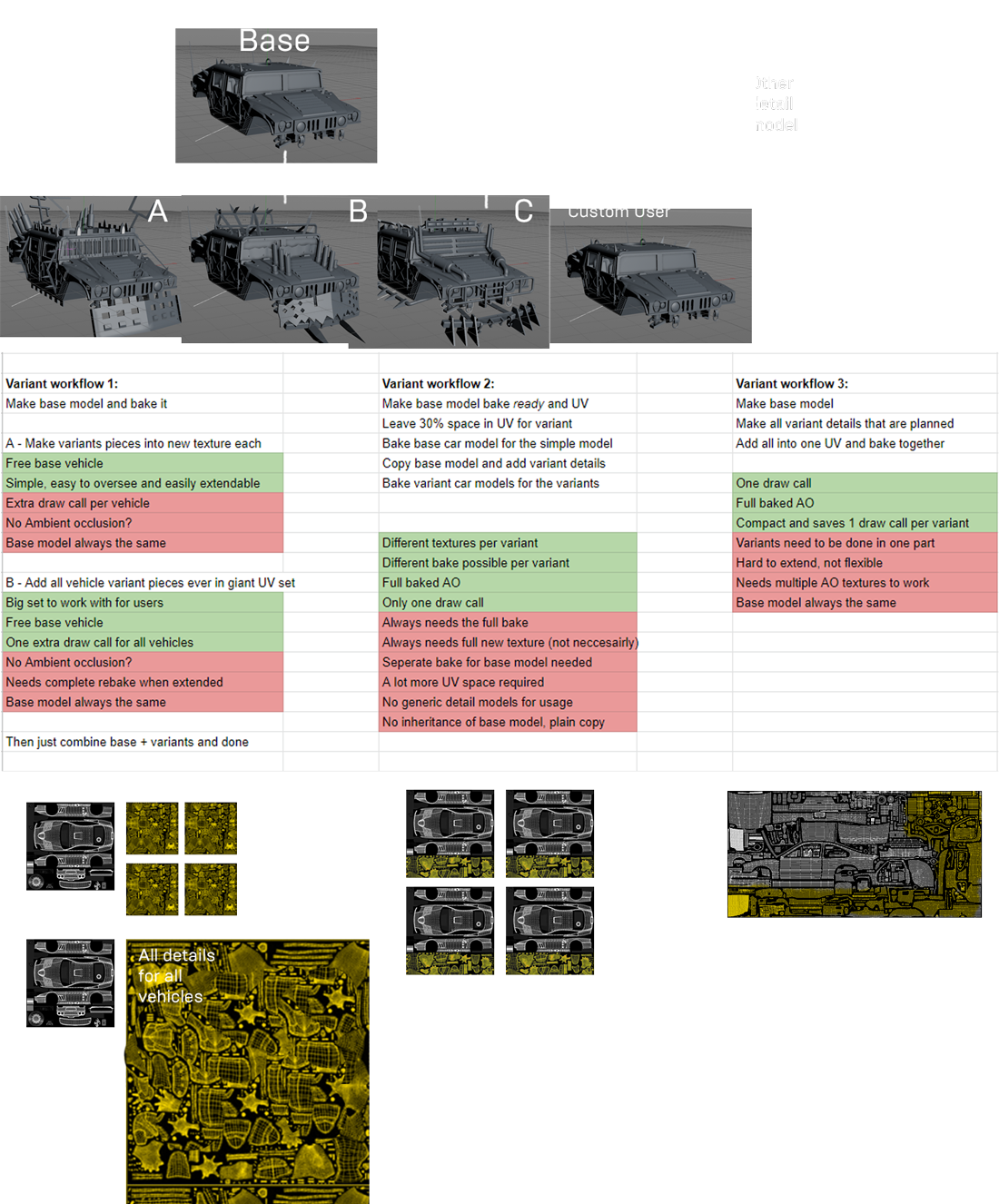The BRAWL² Tournament Challenge has been announced!
It starts May 12, and ends Sept 12. Let's see what you got!
https://polycount.com/discussion/237047/the-brawl²-tournament
It starts May 12, and ends Sept 12. Let's see what you got!
https://polycount.com/discussion/237047/the-brawl²-tournament
Best workflow for variants? Need some insight
Hey guys
So Im making some vehicles and other stuff and I need a simple base car and some custom variants.
For the moment, what I did was make a base model, UV it, and then make 3 copies basically, and then added extra details in empty UV space I left beforehand, then baked them 4x for 4x final models. That is a destructive workflow however and Im not sure what I should do. Here a overview:

(These are not upgrades and do not change in runtime, it is 4 different cars basically)
If I found a solution for AO I could also go with a simpler workflow, but without baked AO for the details, quality just goes down drastically, especially when viewed from a distance which is important.
Also if I go with UV2 tricks for AO, I will double vertice count right? I have absolutely avoided UV2 so far, maybe that is a solution but I have no experience with it and will look that up a bit now. (Edit: whats happening with the polycount formatting?)
Anyone any ideas?
So Im making some vehicles and other stuff and I need a simple base car and some custom variants.
For the moment, what I did was make a base model, UV it, and then make 3 copies basically, and then added extra details in empty UV space I left beforehand, then baked them 4x for 4x final models. That is a destructive workflow however and Im not sure what I should do. Here a overview:

(These are not upgrades and do not change in runtime, it is 4 different cars basically)
If I found a solution for AO I could also go with a simpler workflow, but without baked AO for the details, quality just goes down drastically, especially when viewed from a distance which is important.
Also if I go with UV2 tricks for AO, I will double vertice count right? I have absolutely avoided UV2 so far, maybe that is a solution but I have no experience with it and will look that up a bit now. (Edit: whats happening with the polycount formatting?)
Anyone any ideas?

Replies
thought about it a bunch more and asked some more people
I also think 3 is the ideal workflow at least in my case, and especially when you know how many variants you need +-